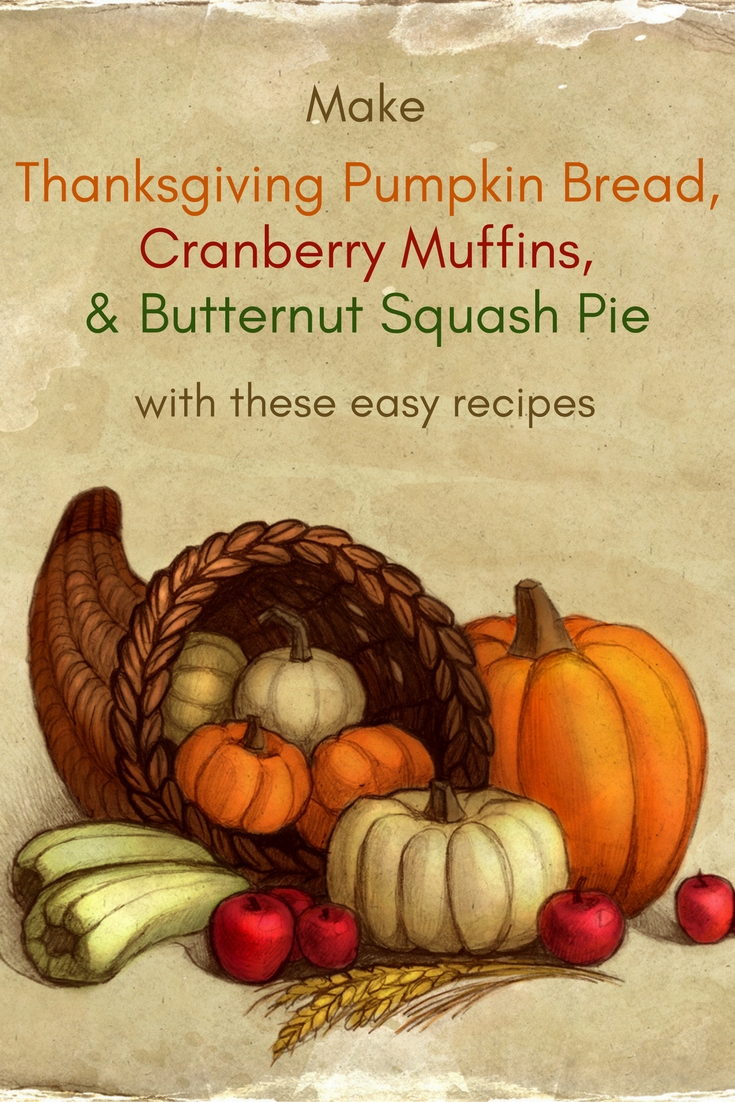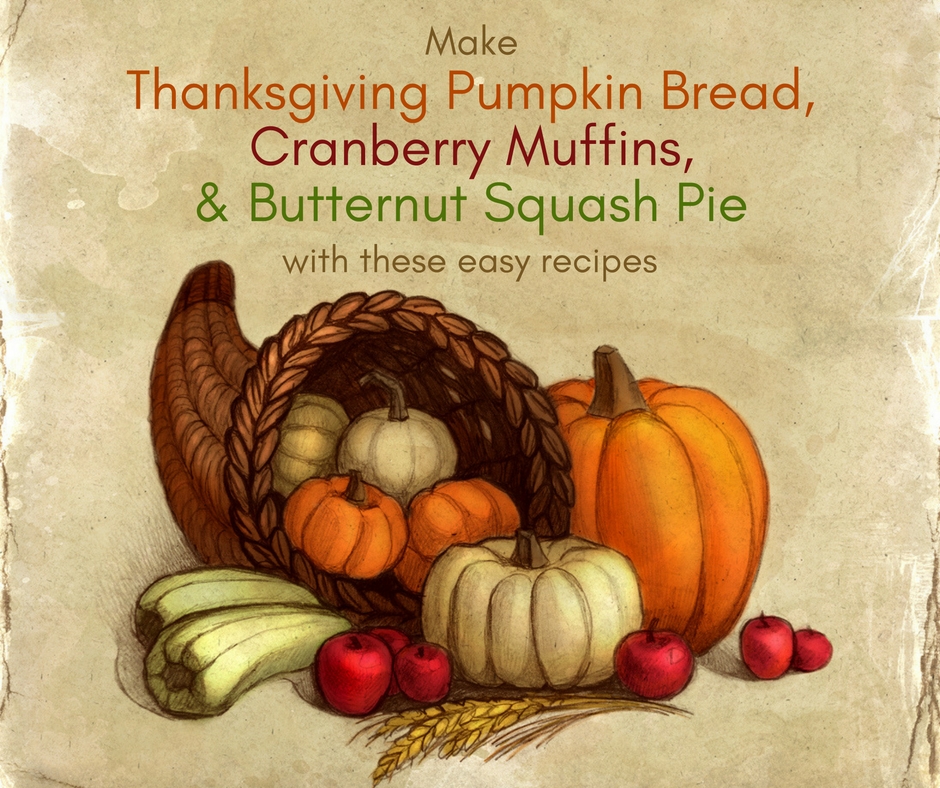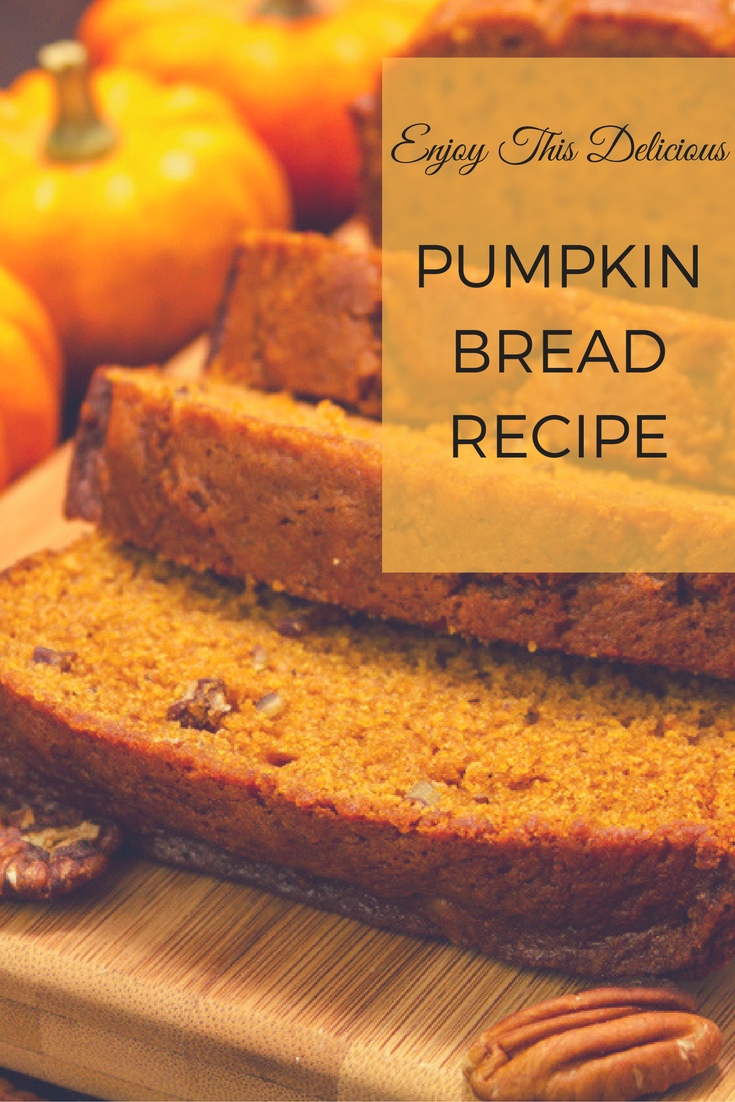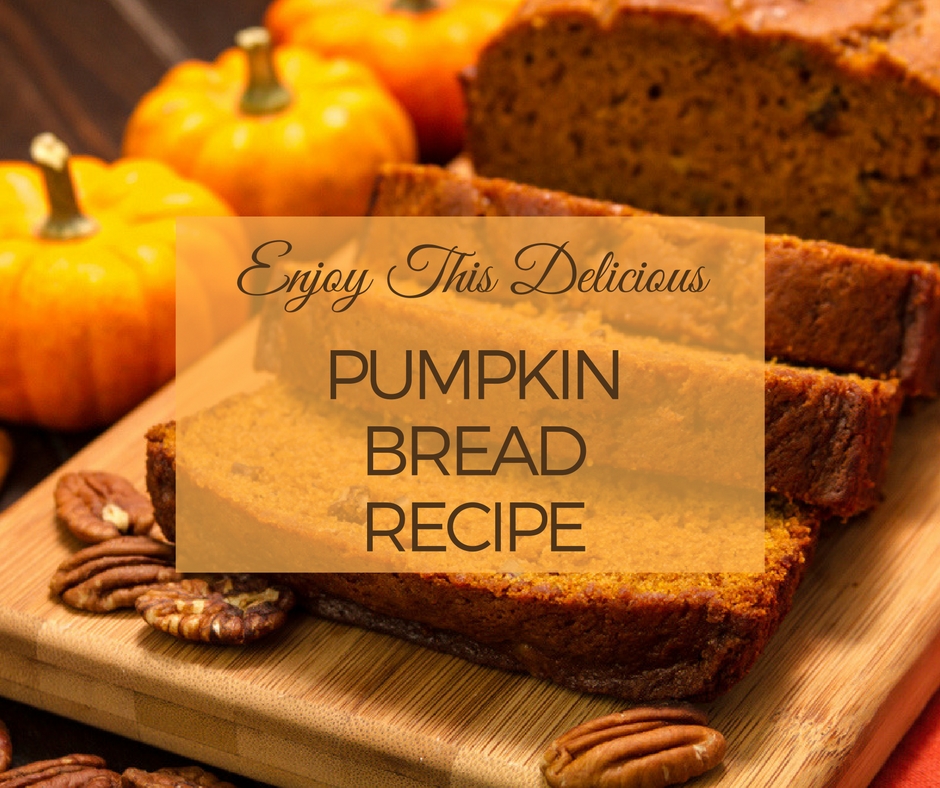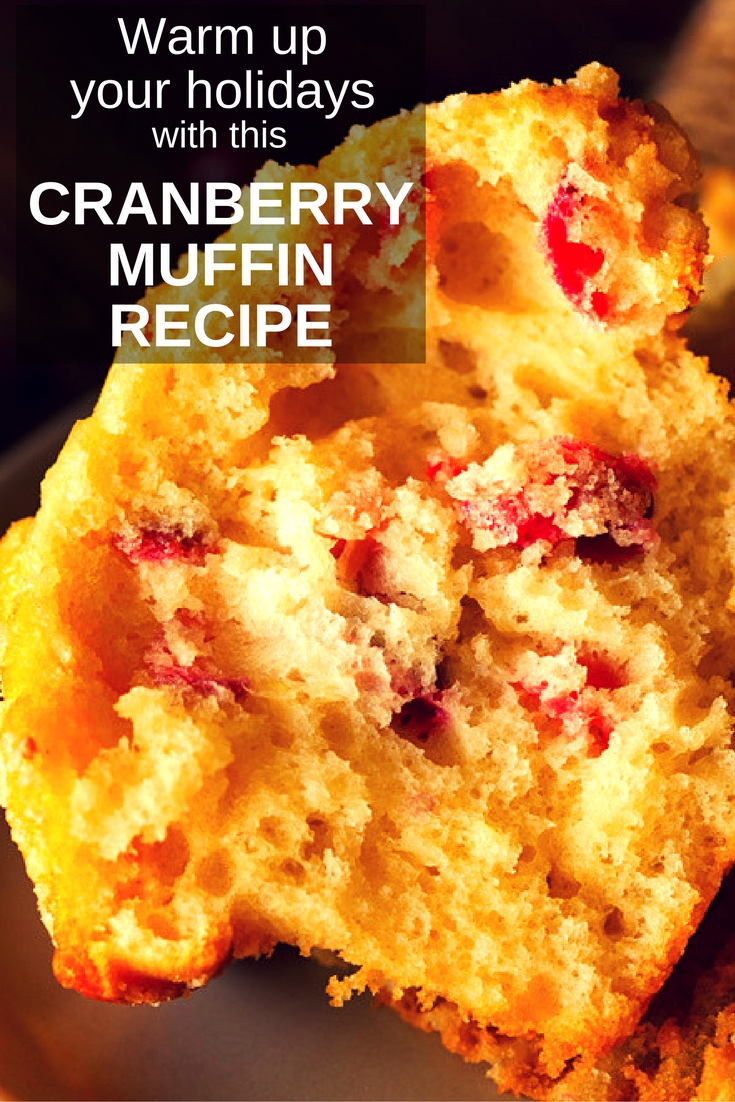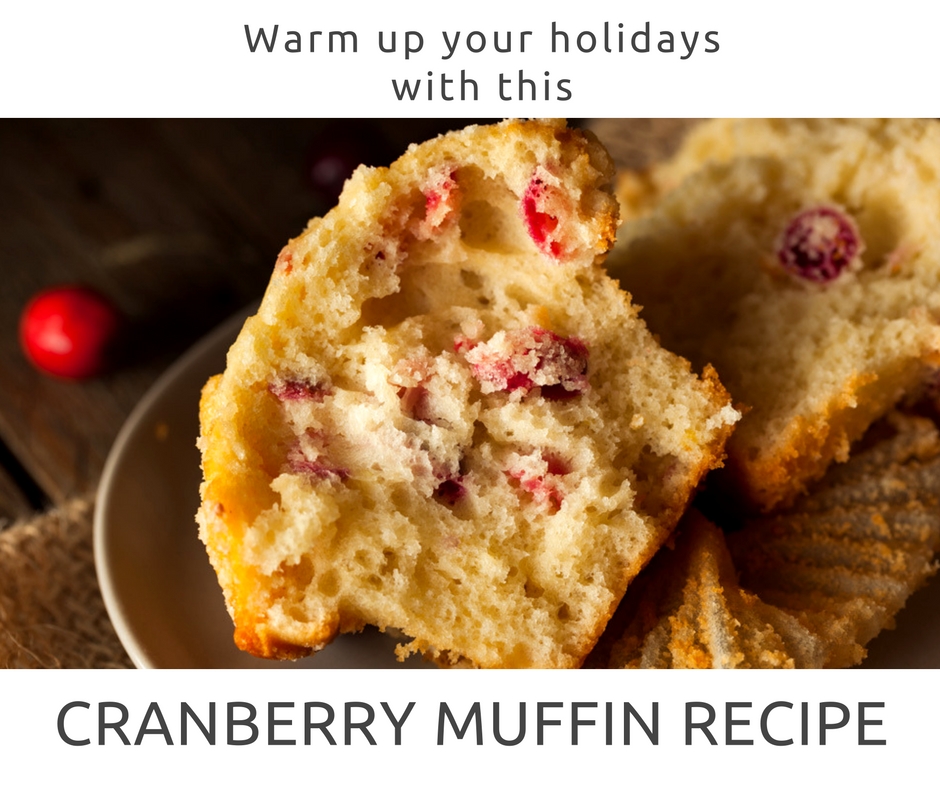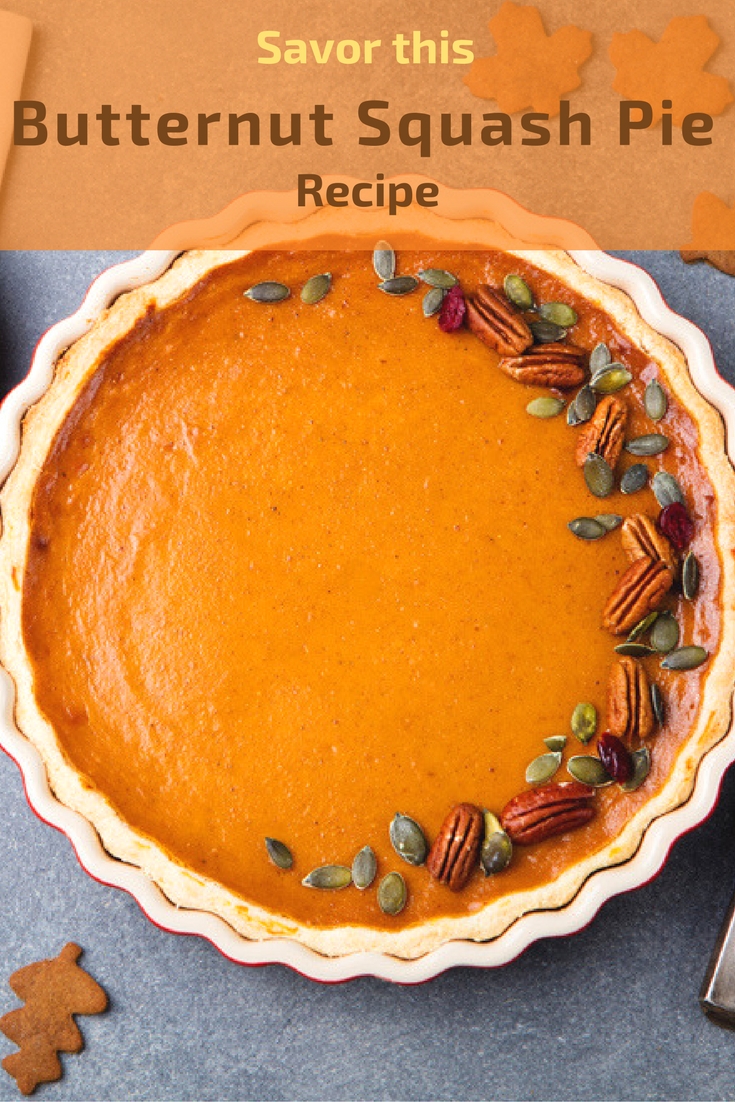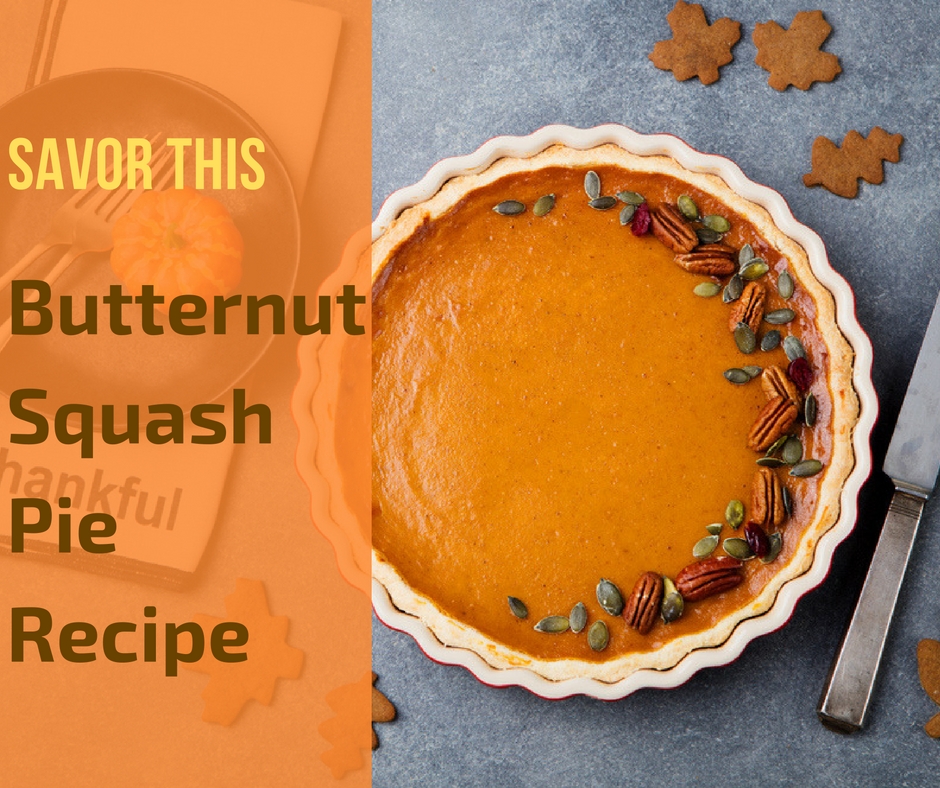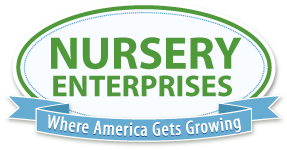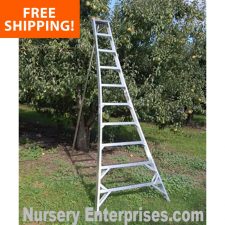Thanksgiving Recipes & Thanksgiving History
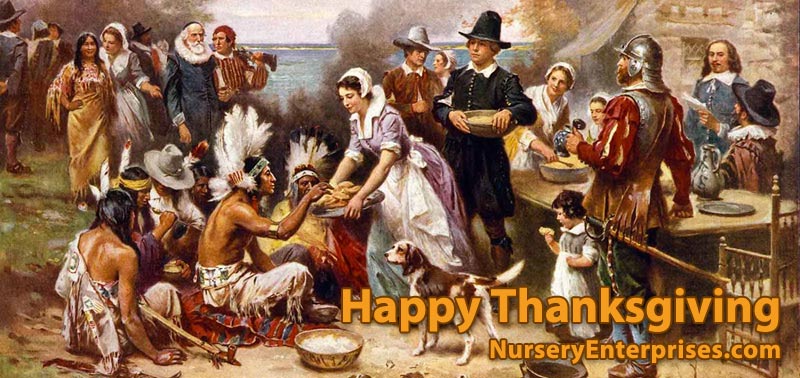
Thanksgiving Recipes & Thanksgiving History
Enjoy these wonderful autumn and fall recipes using your vegetables from your garden. You can share these Thanksgiving recipes & Thanksgiving history with your family.
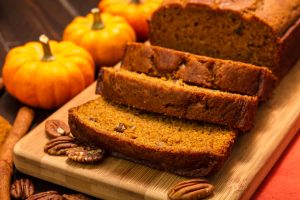
Pumpkin Bread Recipe
3 1/3 C. sifted flour
2 tsp. baking soda
1 1/2 tsp. salt
1 tsp. cinnamon
1 tsp. nutmeg
3 C. sugar
1 C. chopped pecans
4 eggs, slightly beaten
1 1/2 C. pumpkin
1/3 C. oil
1/2 C. applesauce
2/3 C. water
Mix and sift dry ingredients. Add nuts and mix. Combine eggs with remaining ingredients. Pour all at once into dry ingredients and blend lightly. Bake in 2 greased loaf pans. Bake at 350° for 1 hour.
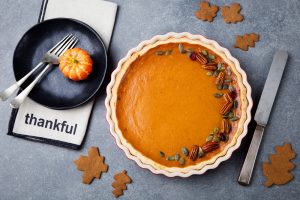
Butternut Squash Pie Recipe
3/4 C. brown sugar
1 Tbsp. flour
1/2 tsp. salt
1/4 tsp. ground ginger
1/2 tsp. allspice
3/4 tsp. lemon juice
3 eggs
1 1/2 C. mashed squash
1 C. milk
9-inch pie shell, unbaked
Combine sugar, flour, salt, spice and juice. Beat in eggs. Stir in squash and milk. Pour into shell. Bake at 400° for 40-50 minutes.
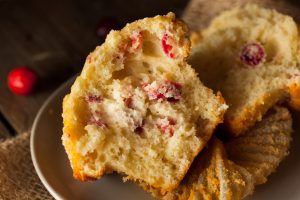
Cranberry Muffins Recipe
2 C. sifted flour
2 Tbsp. sugar
2 1/2 tsp. baking powder
1/2 tsp. salt
1 egg, well beaten
1 C. milk
1/4 C. melted butter, cooled slightly
1 C. chopped cranberries, mix with 1/4 C. sugar
Streusel Topping:
1/2 C. brown sugar
1/4 C. flour
1 1/2 tsp. grated orange peel
1/2 C. toasted pecans
2 Tbsp. butter, melted, cooled.
Sift together flour, sugar, baking powder and salt. Add cranberries. Mix egg, milk and butter. Add liquid mixture to the flour mixture and stir only until flour is moistened. Spoon into well greased muffin tins. Fill 2/3 full. Add Streusel Topping 1 1/2 tsp. per muffin. Bake at 400° for 25 minutes.
When is Thanksgiving Day 2022?
What date is Thanksgiving Day 2022?
The United States will observe Thanksgiving Day on Thursday, November 24th, 2022. Almost all government buildings are closed on Thanksgiving, and most businesses are closed as well.
What is Thanksgiving?
The word, “Thanksgiving” has two meanings: 1) to give thanks, especially to God, for our prosperity of the past year, or 2) an annual American holiday commemorating the First Thanksgiving Feast of the Pilgrims, which they celebrated in the fall of 1621 in Plymouth, Massachusetts, after having suffered tremendous hardships. It was a symbolic turning point for the Pilgrims.
The real history of Thanksgiving Day
There are reports of “Thanksgiving-like” events held by Spanish, French, as well as English colonists in North America before the Pilgrims. Days were sometimes called and set aside for prayer and worship to express gratitude for successful harvests, good weather, military victories, etc. None of them are reported to have been regular annual events. Instead, some were intended to be weekly events, while others were observed only once. Many of the groups that purportedly observed at least one “Thanksgiving Feast,” only existed for a few years and then either abandoned their colonies or were killed or driven out. The enduring American Thanksgiving holiday comes from the Pilgrim Thanksgiving of 1621.
What is the story behind Thanksgiving?
Why did the Pilgrims leave from Europe, and what were they hoping to accomplish in the New World?
The Pilgrims began on a different foot than one of their most famous predecessors, Jamestown, which was an English colony founded in Virginia in 1607 and was not settled as a community for people to live and eek-out a living the way they saw fit. Instead, the Plymouth Colony was a for-profit company camp, founded by The London Company, and its population more closely resembled employees than settlers. The Pilgrims, on the other hand, came for freedom-more particularly, religious freedom. They were not employees of the company, but they were settlers who agreed to repay the merchant sponsors (financial backers) of their passage. The Pilgrims were deeply religious Christians; they were Separatists. Some define that to mean that they believed their church organization should be completely separate from the government, while others define it to mean that they wanted to separate themselves from the Church of England. Ultimately though, both notions resulted in the same end—in England, they were not allowed to live their lives or worship God according to the dictates of their own heart. Everyone who did not recognize the absolute civil and spiritual authority of the state/church was persecuted. They were hunted and imprisoned, so they ran away from England. Like many of the colonists of the era, the Pilgrims arrived in America as an attempt to flee from captivity and oppression.
What problems did they face upon arrival and settlement?
Their voyage was sponsored by the Plymouth Company which was headquartered in England. They believed they were being led by God and faithfully placed their fate in the hands of the Lord “… and they went forth out of captivity, upon the many waters.” In November of 1620, the Pilgrims arrived and settled Plymouth, Massachusetts, after having signed the Mayflower Compact before disembarking from their ship off the coast. The Compact was an agreement among the settlers to mutually support one another. In addition to having to settle the wilderness, the Pilgrims were also burdened with the debt they were contracted with by the Plymouth Company to pay back through trade goods.
Before the Pilgrims left the Old World, their sponsors in London wrote a contract that called for everything they produced to be stored in a common storehouse with each member of the commune entitled to a common share. The Plymouth Company wanted a form of fairness (as they saw it), so their houses, lands, and improvements were all owned in common by the collective. Everyone owned everything, and at the same time, each person owned nothing for himself. As a result, half the people didn’t carry their weight and productivity was hamstrung.
Thanksgiving facts that are important, but not shared frequently.
Having arrived in November, it was too late to plant any crops. However, they could have hunted, fished, and gathered food and firewood and built shelters and sanitary water and waste facilities. But they didn’t; there was no incentive to work. The most productive people chose to not work any harder than the least. Their vision of fairness and equality were their primary concerns, not survival or prosperity. By March, most had died from starvation, illness, and exposure.
All of the causes of death could have been mostly avoided had they possessed more resources. At this point, their leader, John Bradford, recognized that their collectivist, communal lifestyle was at least partly to blame for their tremendous hardships. Bradford’s own words illustrate their common understanding (after the fact) of the hindrance to work and individual exertion created by the communal arrangement. He wrote, “slackers showed up late for work… everybody was happy to claim their equal share…and production only shrank.” He summed it up by saying that one cannot be expected to do his best work without incentive. Therefore, he made a big change: he turned them into capitalists.
According to Timothy Nash (Prof. of Econ. at DeVos Grad School), “Bradford’s changes were the precursor for free enterprise in America. They divided farmland equally among the colonists, thereby creating a private property system and positioning free enterprise and hard work as the backbone to agricultural production in the early days of the Colony. Once property rights were established and free enterprise flourished, the colonists never missed a payment.”
They dismantled their socialist order and instituted private property, and in Bradford’s own words, “made all hands industrious, so as much more corn was planted than otherwise would have been.” He assigned a piece of land to each family to work and manage as they saw fit and declared that they could keep the bulk of what they produced. “History has clearly shown when humankind is most free, we accrue the highest level of invention, innovation, and human progress. Conversely, a decline in freedom is directly correlated to a decline in human progress” (Nash).
The settlers “…who had gone forth out of captivity did humble themselves before the Lord; and the power of the Lord was with them.” “…they did prosper in the land” and produced such a surplus that they set up trading posts to trade with the natives. Prosperity spreads its blessings to all those in close proximity, and in this case, the Native Americans were also blessed by the fortunes afforded by trade.
The unleashing of capitalistic production, coupled with the helpfulness of two natives who taught them how to plant, harvest, hunt, fish, and skin the animals for pelts, marked a turning of the tide for the Pilgrims.
What did the Indians teach them to grow? According to several historical records, they taught the Pilgrims the complete, step-by-step process for growing corn. The Pilgrims called it Indian Corn. They also reportedly taught them how to grow beans and squash.
The timing of the aid offered by the two Native Americans was as important as the visit itself. Any lessons taught by the Indians would have been completely neglected by the settlers under the communal order and a complete waste of time for the Indians. The helping hand from the Indians only had value the following Spring, within the free and capitalistic system wherein the individual was responsible for his own labor and profits.
What is Thanksgiving all about? What is Thanksgiving really about?
The following late Summer or Fall, after having been given the opportunity to be industrious, the Pilgrims had such a surplus of food and overflowing gratitude for their first harvest that they hosted the Indians for a large feast. Responding to an invition from the Pilgrims, around 90 of the Wampanoag Indians arrived with fowl, and game of all kinds—including five slaughtered deer, and together with around 45 Pilgrims, they had a largely spontaneous three-day outdoor event, which included military-like drills, songs, games, dance, competitions and contests, and the feast that we call the first Thanksgiving. Whether the Pilgrims called it a thanksgiving feast is not known, nevertheless, the feast was a stark contrast to the sad events of the previous winter. They were thankful to God, to the Indians, and to all things that came together to bring deliverance and prosperity. That’s what Thanksgiving really means.
What did they eat on the first Thanksgiving?
Theories on what they may have eaten are partly based on written records from some who attended, as well as scholarly studies on what they ate on other occasions. The possible dishes included: roasted waterfowl (like goose and duck and perhaps other poultry like turkey or swans or passenger pigeons or maybe even eagles or cranes), stuffing made with onions, herbs, chestnuts, and dried corn, porridge, venison, lobster, clams, mussels, and other shellfish, fresh and dried fruits and berries, eels, Indian tubers like turnips and American Groundnut, stewed pumpkin and/or pumpkin bread, beans, carrots, meat pies, fish pies, boiled and/or roasted squash, cod, striped bass, bluefish, vegetable and meat stew, cornbread, acorns and other nuts, all washed down with water and/or beer made from barley.
The first several Thanksgivings consisted of what?
Though it may not have been strictly observed every single year since 1621, it was observed irregularly off and on, and then grew more and more regular. Most of the “Thanksgivings” in the following decades were observed for various different reasons or specific causes pertaining to important issues to the residents of the various colonies and communities. Thanksgiving gradually evolved towards a more general, standard meaning for most people, and within a few decades, it became an annual Fall observance in several English colonies in New England. By 1670, England controlled all of the Atlantic coast from Maine to Florida, and by 1700, Thanksgiving was spreading over most of that region.
Who started Thanksgiving?
More than 150 years after the first Thanksgiving, after an important victory over the British, the Continental Congress and General George Washington made a proclamation declaring Dec. 18, 1777, to be a national day of Thanksgiving for that victory. Most recognize that as our first nationally declared Thanksgiving.
Thanksgiving gained more prominence in 1789 when, according to the Mount Vernon Ladies’ Association, Congress requested “President Washington to declare a thanksgiving observance in honor of the creation of the new United States Constitution.”
Washington then issued the “proclamation on October 3, 1789, designating Thursday, November 26 as a national day of thanks.” He slightly augmented the original intent, and said it was necessary to have such a day to give due recognition to “the Almighty’s care of Americans prior to the Revolution, assistance to them in achieving independence, and help in establishing the constitutional government.” The settlers to this new land undoubtedly “…were delivered by the power of God out of the hands of all other nations.”
Why is Thanksgiving always on a Thursday?
There is no fixed Thanksgiving date. The Old Farmer’s Almanac explains, “Since George Washington’s time, Thursday has been the day, and this was solidified by Abraham Lincoln’s proclamation in 1863 designating the national day of Thanksgiving to be the last Thursday of November. Later, it was amended to the fourth Thursday in November.” This is what we observe now.
What to do for Thanksgiving?
How to do Thanksgiving at home?
The way you commemorate Thanksgiving is totally up to you. You and your loved-ones can celebrate any way you want. It doesn’t have to be elaborate; the simpler the better. Consider creating a new Thanksgiving tradition for your family. Some have made an annual tradition of playing a football game with friends and neighbors on Thanksgiving morning. You might consider playing board games or card games. Maybe shout-out a Thanksgiving quiz, an American history quiz, or a family history quiz. Perhaps after everyone is done eating, you could make a video and share stories about the best thing or most interesting thing that happened in your life this year, or just anything interesting. If you have little ones in the group, they could do skits, perform tricks, tell jokes, or deliver a speech or musical presentation. Getting these recorded will be very inexpensive treasures for your posterity. Consider creating a Thanksgiving posterboard whereon you can put photographs of everyone in attendance from each year. Maybe each board can represent a two or five-year period. As the years roll on, these will become an anticipated part of Thanksgiving for many.
Some Americans go out and serve the community, maybe at a homeless shelter or a soup kitchen. George Washington donated to those in jail on Thanksgiving Day in 1789, so they might count their blessings and brighten their hope for a better future. The main event for most Americans, though, is the dinner feast.
You might invite the family to your house for an afternoon and evening of great food and drink, good fun and conversation, and warmed hearts. Don’t forget to include the shut-ins and those who don’t make themselves known very much. It’s also a good time to consider any who don’t have loved ones with whom to share the evening; you might consider inviting one or more of them. Maybe you could ask all who come to your house to bring just one thing to the gathering, thus giving them an opportunity to serve and make their own contribution. Some groups have a prayer before dinner, others don’t. Most dining rooms aren’t large enough for everyone, so diners often spill-over into the living room. Some turn on movies, maybe Christmas movies, while others only have background music playing, so as not to interfere with conversations.
What do we eat for Thanksgiving Dinner?
American Thanksgiving dinner feasts are flexible and ever evolving, but the typical dishes include: turkey, stuffing or dressing, ham, candied yams, cranberry sauce, baked or mashed potatoes with gravy, buttered bread rolls or biscuits, fresh or canned or frozen corn, winter squash, green beans often served as a green bean casserole, a fresh salad, and cornbread. For dessert: cinnamon rolls, various pies including pumpkin pie, sweet potato pie, apple pie, mincemeat pie, and pecan pies are typically served. Hot, spicy apple cider or cold apple cider are always hits, as are hot chocolate or a homemade fruity punch served hot or cold.
Why do we have Thanksgiving?
Why we should be grateful to our forefathers and to God for settling this land?
Why do Americans celebrate it anyway; why do we celebrate Thanksgiving Day? We celebrate it, because it helps us to “put on the table” our gratitude to God, to our loved ones, and to others in the community. It reminds us that if we aspire to “secure the Blessings of Liberty to ourselves and our Posterity,” we must remain true to the principles that allowed the Pilgrims’ first Thanksgiving to take place. Specifically, we must protect the heritage not only of our Founding Fathers, but also of the Pilgrims, who created a culture wherein each of us is allowed to exert our effort, to struggle and partner with God in answering our prayers, and subsequently, to keep the fruits of one’s sacrifices. Then, if we are fortunate, God and providence may unlock the windows of Heaven and give us cause to rejoice with Thanksgiving. Verily, it can be said that the Pilgrams and their successors “…have gone forth out of captivity, and have been lifted up by the power of God above all other nations, upon the face of the land which is choice above all other lands.”
This is essentially the real meaning of Thanksgiving.
Happy Thanksgiving 2023 from the folks at Nursery Enterprises!
